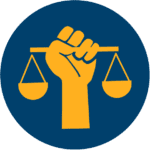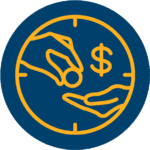Charles Brennan provided testimony in support of House Bill 24-1129, Protections for Delivery Network Company Drivers. CCLP is in support of HB24-1129.
Recent articles
CCLP testifies in support of TANF grant rule change
CCLP's Emeritus Advisor, Chaer Robert, provided written testimony in support of the CDHS rule on the COLA increase for TANF recipients. If the rule is adopted, the cost of living increase would go into effect on July 1, 2024.
CCLP testifies in support of updating protections for mobile home park residents
Charles Brennan provided testimony in support of House Bill 24-1294, Mobile Homes in Mobile Home Parks. CCLP is in support of HB24-1294.
CCLP’s legislative watch for April 5, 2024
For the 2024 legislative session, CCLP is keeping its eye on bills focused on expanding access to justice, removing administrative burden, preserving affordable communities, advocating for progressive tax and wage policies, and reducing health care costs.
Income & Self-Sufficiency Policy Forum Recap, Part 1: The Self-Sufficiency Standard and barriers to self-sufficiency

At the beginning of September, CCLP hosted its second Policy Forum series event on Income and the Self-Sufficiency Standard in Colorado. We are grateful to those who were able to join us in conversation. Attendees raised important questions about the income trends as well as what it means to be self-sufficient. From guaranteed income to the barriers and inequities of having a lower income, to the cliff effect in government assistance programs, there is certainly much more Colorado must do in order to give everyone a chance at self-sufficiency. Similar to our Affordable Housing Policy Forum from this summer, this event was proof that there is never one way to solve the systemic barriers facing our communities, but it gives us insight into the goals and potential outcomes we can achieve when we place our focus on those most marginalized by the practices and institutions in place.
This is part 1 in a series of 2. Continue reading about the event and the issues of income and the Self-Sufficiency Standard in part 2 with a link at the bottom of this article.
Poverty vs. Self-Sufficiency
Charles Brennan, CCLP’s Deputy Director of Research, opened the event with a presentation on topline data and emerging trends from the upcoming Self-Sufficiency Standard report.
CCLP has partnered with the University of Washington’s Center for Women’s Welfare in creating the Colorado Self-Sufficiency Standard. Mr. Brennan described the Self-Sufficiency Standard as a basic needs budget; one that estimates the costs for a household’s basic needs, such as housing, food, childcare, transportation, etc., and adds them together to estimate the income needed to cover all of those expenses. Whereas, the Official Poverty Measure determines poverty status by calculating a household’s pre-tax income against a threshold where food costs are approximately one-third of a household’s total expenses. The OPM severely downplays the number of families living in poverty today, making the Self-Sufficiency Standard a much more accurate measure of economic need.
Through their research, the Center and Mr. Brennan estimated the income needs across the state, varying by county; what is self-sufficient in Boulder County is going to look different than in Lake County. As Mr. Brennan showed in his presentation, the Self-Sufficiency Standard proves how difficult it can be to set statewide standard eligibility criteria for public benefit programs, such as SNAP. While the current eligibility requirements may be adequate for individuals living in the Eastern Plains, they may not address the needs of households in mountain resort communities which must earn twice as much money to cover their household expenses. Mr. Brennan explained to our audience that the Standard also differs by demographics, where the most vulnerable populations include Latinx households, single mothers of color, and those with less than a high school diploma (or equivalent). Crucially, the latest data proves that working a full-time, year-round job does not guarantee a household will earn enough to make ends meet—and if wages are too low compared to costs, then even working more hours may not necessarily cover a household’s needs.
Mr. Brennan also referred to our Overlooked and Undercounted report released earlier this year, which provides insight into how much public investment would be needed to ensure all households were at or above Self-Sufficiency. Overall, $10.3 billion would be needed to allow all households in Colorado to meet their basic needs based on their household composition, county of residence, and current income.
We anticipate the publication of this report in October 2022, so please check back next month for the full report!
Barriers That Cause People to Fall Behind
During the second part of our forum, we asked our panelists to provide examples of the barriers that cause people to fall behind and below the Self-Sufficiency Standard. Managing Attorney, Ellen Giarratana, stated having a criminal record impacts a person’s ability to earn a living wage throughout their life. Regardless of what the record is for, or even if charges were never filed — having a record can impact an individual’s ability to cover their basic needs. Earlier this year, Ms. Giarratana, alongside many of our partners, helped to pass the Clean Slate law, SB 22-099, to address some of these difficulties by creating a better process for record sealing. The act of record-sealing means that records are not readily available to the public, making it easier for individuals to access higher education, gain employment, find housing, or even donate an organ.
Our Legislative Director, Chaer Robert, provided additional barriers, such as the apparent digital divide between generations of Americans, the level of skills jobseekers and current workers have, the rising inflation costs, and the lack of intergenerational wealth.
Ms. Robert explained that employment and economic opportunities can be reduced because of inadequate equipment or devices, limited skills, or even a lack of trust and comfort in using digital technology. Even those with a college degree or other credentials may struggle to remain competitive with current digital expectations. Commonly, workers are required to use computers on the job at a level above where their actual skills might be. And while an online and remote option may be available, there still may be other skills needed in order to earn an income. This dynamic is true for both jobseekers and current workers who want to advance their abilities. Often, economic opportunities and high-paying positions have been concentrated on those who already have advanced skills or a degree, leaving behind entry-level workers.
Another concern raised in the event is the rising inflation costs. As Ms. Robert suggested, many individuals can feel like they are falling behind based on their personal economic situation. Due to the rising costs of rent, childcare, travel costs, etc., we have seen an increase in nearly 50% of parents helping their adult children between ages 18-29. These costs also include food, insurance, a cell phone bill, and/or tuition. For young adults without this family support, intergenerational wealth or a savings cushion, the high costs of living can drive an increase in debt, specifically through credit cards, simply to meet their basic needs.
Part 2: Policy ideation, room for improvement, and the challenges ahead, read here.
Interested in learning more about affordable housing in Colorado, check out our last three articles and our Housing Legislation list here:
For Part 1: The Event, ARPA, & more, read here.
For Part 2: ADUs, mobile homes, rent stabilization, and new development, read here.
For Part 3: Attendee questions and resources, read here.
Read more about affordable housing bills passed in 2022 in our Housing Legislation list here.





